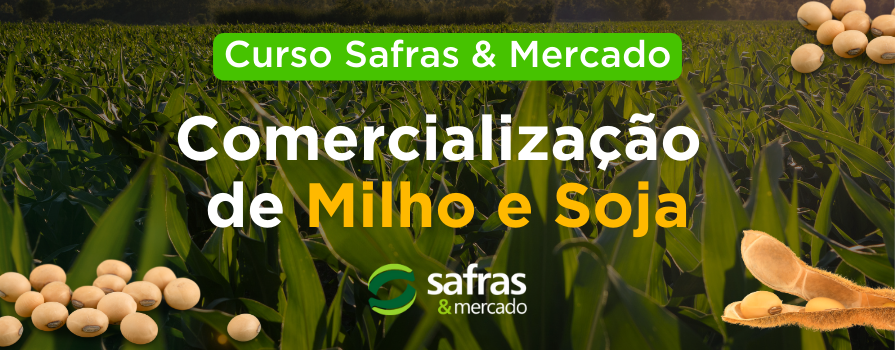The production of DDG, a byproduct of the manufacture of corn ethanol, will grow by more than 60% in Brazil this year, replacing part of the soybean meal in the composition of animal feed, a situation that has helped producers and consumers in a situation of scarce supply and prices high levels of raw materials.
For the National Corn Ethanol Union (Unem), the production of DDG (dry grains by distillation) in Brazil will increase to around 2 million tons in 2020, compared to 1.2 million tons in 2019, as more corn ethanol plants come into operation, which fits well with the demand from cattle, pig and poultry farmers who deal with high costs.
“DDG replaces soybean meal, it has a more accessible price, it is cheaper, despite having a lower protein level…”, Unem president Guilherme Nolasco told Reuters.
“But at this time of unbridled rise in the price of corn and soybeans, it has been an excellent alternative to production chains, especially cattle, given the historic period of drought that the country is going through”, added Nolasco, remembering that, with pastures dried, the product complements animal feed.
Continues after form
{module 442}
In addition to being an alternative for livestock feed, which absorbs the majority of DDG production in Brazil, poultry and swine farming are also replacing part of the soybean meal with corn by-product, an indication of the potential of this raw material, which It is already used on a large scale in the United States, the largest global ethanol producer.
“The co-products from corn ethanol plants, DDG (dry) and WDG (wet), have gained space in the market by replacing or compounding with soybean meal and other protein sources. What has encouraged this is the best cost/benefit ratio, and the inclusion of cattle, pigs and poultry in the diet”, commented Thayná Drugowick de Andrade, a zootechnician who works at Scot Consultoria.
She also said that DDG and WDG have gained market share as an alternative protein source, but they also have good levels of energy in their composition, which is also of interest to breeders.
“These co-products have been gaining prominence due to their more attractive prices and because they are adaptable to different diets, being able to be used either as protein, replacing soybean meal or cottonseed meal, or as energy protein, replacing the corn grain itself”, he added.
According to a survey by Scot Consultoria, in the second half of September the average price of a ton of soybean meal, considering Mato Grosso as a reference, was 2 thousand reais, while DDG was quoted at 1 thousand reais. If the price difference is large, in terms of crude protein the difference between the products is smaller, with bran having 48% and DDG 32%, on average.
Thayná estimates an increase in the supply of DDG this year in Brazil of around 62% compared to 2019, while the consumption of soybean meal in the country, a competitor to the corn ethanol byproduct, is expected to fall by 3.2%, to 16.7 million tons, according to data from the Brazilian Association of Vegetable Oil Industries (Abiove).
The consumption of soybean meal in Brazil will decrease despite the expectation of an increase of 4% in national production of animal feed this year, to more than 80 million tons, a number that includes mineral salt, the executive president of Sindirações told Reuters , Ariovaldo Zani.
“Taking into account the price that bran reached, and corn too, DDG is an ingredient that fits well…”, agreed the director of Sindirações, considering that the product complements the supply of raw materials at a time of great demand for Brazilian meat abroad, a key factor in increasing feed production this year.
COMPENSATE COST
On the other hand, the DDG has been very strategic in helping to offset the increase in raw material costs for the ethanol industry, as corn has doubled in price, but biofuel has not.
“On the contrary, ethanol is recovering, returning to the January price, and the person who holds this increase in the cost of raw materials for the ethanol industry is DDG”, said the president of Unem, remembering that the pandemic affected the market of the fuel.
He mentioned that soybean meal has risen since the beginning of the year from 1,100 to 2,200 reais per ton, based on Mato Grosso, while DDG increased from 600 to 1,100 reais per ton, and corn went from 24 to 48 reais per bag of 60 kg.
Unem, whose associated industries are concentrated in Mato Grosso and Goiás, where there are also large consumers of the raw material for feed, including cattle feedlots and pig and poultry farms, projects growth of 20% in DDG production for next year, to 2.4 million tons, following an increase in corn ethanol production in the country, to 3.2 billion liters.
Even though DDG production soared in 2020, most of the supply has already been sold by the plants by the end of the year, revealed Nolasco, adding that sales contracts are now being closed for delivery in 2021.
Source: Notícias Agrícolas
READ TOO:
{module 441}










